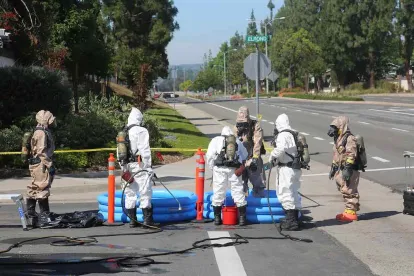As 2020 comes to a close and we begin to discuss in earnest the potential impacts of a Biden-Harris administration on U.S. environmental policy, it is important to look at the current and potential PFAS consumer products regulations. While more movement has occurred in the regulation of PFAS in drinking water due to its more direct impact on human health and the environment, the progression of legislation of PFAS-containing consumer products is still notable and provides insight on states’ concerns in that area.
Categorizing PFAS Consumer Products Regulations
The regulations we are seeing so far with respect to PFAS-containing consumer products can be divided into three main categories. The first category is Contact, which includes regulation of PFAS used in products that humans come into contact with. The second category is Consumption, which covers ways that PFAS can be ingested by humans, either through food or through the transfer of PFAS from food packaging. The third category, which is more of a catch-all and has some overlap with the others, is Warning. This includes laws that exist entirely to provide warnings to consumers about PFAS content in the products they purchase or come into contact with.
Contact
AFFF
It is important to first note that while firefighting foam is not a “consumer” product, it is still included in this category of regulation because of its potential to come into contact with certain individuals — firefighters, soldiers, and airport personnel—as other retail products would. The regulation existing for Aqueous Film-Forming Foam, or AFFF, generally falls into one of two category. The first is a type of ban on the manufacture, sale and use of the foam, while the second is a law requiring disclosure of PFAS use.
There are three variations on AFFF bans in effect in various states. The first is an outright ban, whereby the use of AFFF is completely banned upon introduction of regulation into law. Georgia is the only state that currently has an outright ban in effect. The second is a gradual ban, which would ban all use of AFFF at a date in the future, to allow the public and private sectors to slowly phase out use and find suitable alternatives. California, New York State and Washington State both have enacted a PFAS ban to be put into effect in a number of years. The third variation on AFFF bans is a specific ban, whereby the foam’s use is prohibited from particular non-essential activities, like firefighter training or airport runway incursion drills. Some states have taken this route because AFFF is so effective at preventing or fighting fires, with no exact alternative existing, that its use in real emergencies is allowed to continue. Where training of firefighters and military and airport personnel can be done without discharging AFFF, the states of Arizona, Colorado, Kentucky, Minnesota, and Virginia have required that it not be used.
The second category of contact type regulations for AFFF, requiring disclosure of use, has so far only been enacted in New York, Colorado, and Washington.
PPE
Personal Protective Equipment (PPE) that contains PFAS is starting to be regulated as well, also in the context of firefighting. Along with general concern from the public about the health impacts of PFAS, a recent study from Notre Dame raised further questions about PFAS in firefighting gear. The study found that PFAS can be transferred from the outer surfaces of turnout gear to the thermal liners, which contact skin. This type of regulation, which has been enacted in California, Colorado, and Washington, does not establish a ban on use, but a disclosure requirement, where companies must give written notice of the “intentional addition” of PFAS in firefighting gear.
Cosmetics
The last type of contact regulation found in the United States is unique to California, and is one of the first examples of a ban of a more widely available and used consumer product. In October, the governor signed an act banning the use of PFAS on cosmetics. It will come into effect by 2025, giving companies time to phase out any PFAS in their products.
Consumption
The FDA has been studying the presence of PFAS in food, especially animals and animal byproducts, and its conclusion so far has been that the levels found in the few types of food it did detect PFAS in do not rise to the level of a human health concern. The agency does recommend that people check local advisories, especially for fish consumption. In certain states, including Alabama, Connecticut, Minnesota, New Jersey, and Wisconsin, advisories are in place that recommend a limit on the quantity of fish consumed.
Following the release of reports by environmental watchdog groups revealing PFAS in the to-go containers used by a number of fast food and fast food-adjacent restaurants and grocery stores, public pressure has been mounting to regulate food packaging. So far, regulation has been enacted in the states of Washington and Maine, with legislation introduced in an addition 10 states for debate. The New York State legislature also passed a ban on PFAS in food packaging in July 2020, but as of the publishing of this article, the governor has still not signed the bill into law.
Warning
This category is a catchall designation for laws that require self-reporting of a list of certain chemicals or substances that have been amended to cover PFAS. In California, most notably, Proposition 65 has been in force since 1986. The law requires companies to provide consumers with a clear and reasonable warning when their products contain any of the substances on a constantly updated list. PFOA and PFOS are included on the list of substances that companies must warn consumers that their products contain. Relatedly, a bill has been introduced in the New York State legislature that mirrors California’s Prop 65 law. When passed, certain PFAS deemed to be of concern could be included on the list of substances of concern in New York.
Another type of warning regulation that exists in the US and has been applied to PFAS is laws that cover the use of toxic chemicals in children’s products. Maine and Oregon both have enacted this type of legislation, and PFOS is listed on both states’ lists of chemicals of high concern, which require not only reporting on content, but on a company’s supply chain.
Looking Forward
Based on current trends, it is certain that more regulation of PFAS-containing consumer products is on the horizon. Specific bans on non-emergency use of AFFF are likely to increase, and more iterations of this ban are proposed in a number of states across the country. As mentioned earlier, PFAS-containing food packaging phase-out legislation is proposed in an additional 10 states beyond what is in effect currently. Considering both the public pressure on that type of product and food consumption being a prominent source of human exposure, more regulation is likely forthcoming. Finally, promulgation of more warning regulations, which put the onus on companies to self-report but are more quickly implemented than a ban or phase-out, will likely be expanded to cover PFAS that are of particular concern to the public, like PFOA and PFOS. This last category of regulation may seem like it has less teeth than others, but on top of the violations companies can accrue for ignoring or misreporting, Prop 65-esque legislation allows for extensive data gathering, which is so important as we continue to learn more about the human health impacts of PFAS.




 />i
/>i
